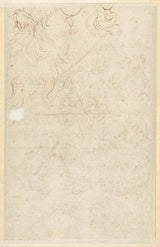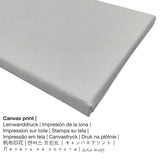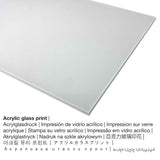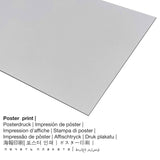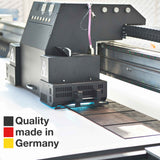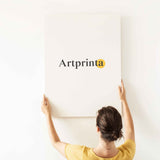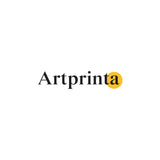Camillo Procaccini, 1561 - Ọmụmụ ya - mbipụta nka mara mma
Ụtụ gụnyere. Mbupu gbakọrọ na ndenye ọpụpụ.
Ozi ndabere ngwaahịa nka
Ihe osise a nwere aha Her study kere site na nwoke Onye omenkà Ịtali Camillo Procaccini. N'oge a, a na-etinye ihe osise a na nchịkọta nka nke Rijksmuseum, nke dị na Amsterdam, Netherlands. The kpochapụwo nka ngalaba ọha artpiece na-nyere na n'ikike nke Rijksmuseum.Creditline of the artwork: . Further, the alignment of the digital reproduction is portrait and has an image ratio of 2: 3, which means that the length is 33% shorter than the width. Camillo Procaccini was a male painter from Italy, whose artistic style can be classified as Mannerism. The European painter lived for a total of 79 afọ, amuru na afo 1550 in Bologna, Bologna province, Emilia-Romagna, Italy and died in 1629.
Nkọwa gbasara nka
| Aha nke ọrụ nka: | "Her study" |
| Nhazi: | sere |
| Otu sara mbara: | nka ochie |
| Narị afọ nka: | 16th narị afọ |
| Afọ nka: | 1561 |
| Afọ nka: | 450 afọ |
| Egosiputara na: | Rijksmuseum |
| Ebe ngosi nka: | Amsterdam, Netherlands |
| E Nwere na: | Rijksmuseum |
| License: | ngalaba ọha |
| Site n'aka: | Rijksmuseum |
Nchịkọta ihe nkiri
| Ihe nkiri: | Camillo Procaccini |
| Aha ndị ọzọ: | Camil. Procaccini, procaccino camillo, Camillo Procazzini, Procaccini Camillo, Camillo Procaccino Milanese, Camillo Proccacino, Camillo Procaccino, Camillo Precacchino, proccacini camillo, Camillo Procaccini, Camille Procaccino, Camillo Precanio, C. Procacini, Camillo Procacino, Camillo procasino, C. Procaecini, Camillo Procarcino, Camille Procaccini, C. Proccacini, Procacini Camillo, Portachin, Procaccini, Camielo Precanio, Camille Procacini, C. Procatsini, Camilla Procacina, Camelle Procaccini, Camillo Proccinio, Ca. Procaccini, C. Procaccini, Camillo Prochasino, Camillo Procacini, Camilla Proccacini, Cam. Procaccini |
| okike nke onye nka: | nwoke |
| Nationality: | Italian |
| Ọrụ: | onye na-ese ihe |
| Obodo obibi: | Italy |
| Nkewa onye nka: | nna ukwu ochie |
| Ụdị nke onye na-ese ihe: | Omume |
| Akwụsị: | 79 afọ |
| Afọ ọmụmụ: | 1550 |
| Obodo: | Bologna, Bologna n'ógbè, Emilia-Romagna, Italy |
| Nwụrụ n'afọ: | 1629 |
| Nwụrụ na (ebe): | Milan, obodo Milano, Lombardy, Italy |
Ihe di
N'ime menu ndọpụta ngwaahịa ị nwere ike họrọ ngwa na nha dabere na mmasị gị. Nhọrọ ndị a dị maka n'otu n'otu:
- Mbipụta akwụkwọ mmado (akwa akwa akwa): A poster is a printed flat cotton canvas with a slightly roughened texture on the surface. Please bear in mind, that depending on the size of the poster print we add a white margin between 2-6cm round about the artwork, which facilitates the framing with your custom frame.
- Mbipụta nke aluminom: Aluminium Dibond prints are prints on metal with an outstanding depth effect. The Aluminium Dibond Print is your best introduction to replicas made on aluminum. The direct UV print on aluminium is the most popular entry-level product and is an extremely stylish way to showcase art, because it puts 100% of the viewer’s attention on the replica of the artwork.
- Kwaaji: A canvas print is a printed canvas mounted on a wooden frame. Furthermore, a canvas generates a homelike and comfy appearance. The great advantage of canvas prints is that they are relatively low in weight, which means that it is easy and straightforward to hang up your Canvas print without the support of additional wall-mounts. A canvas print is suitable for all types of walls.
- Mbipụta iko acrylic (nke nwere ezigbo mkpuchi iko n'elu): The acrylic glass print, which is often referred to as a UV print on plexiglass, will turn the original into gorgeous home decoration. Your own replica of the artwork is being manufactured thanks to the help of modern UV print technology. The great advantage of an acrylic glass fine art copy is that sharp contrasts and painting details will be more exposed because of the granular tonal gradation in the print.
Nkọwapụta ngwaahịa
| Ụdị ngwaahịa: | ọrụ mgbidi |
| Mmeputakwa: | dijitalụ mmeputakwa |
| Usoro mmepụta: | Mbipụta UV ozugbo |
| Nlụpụta: | arụpụtara na Germany |
| Stockdị ngwaahịa: | mmepụta ihe na-achọ |
| Ojiji ngwaahịa: | ụlọ mmepụta ihe nka, nka mgbidi |
| Nhazi onyonyo: | usoro eserese |
| Oke akụkụ: | 2: 3 |
| Nkọwa: | ogologo bụ 33% mkpụmkpụ karịa obosara |
| Akụrụngwa ị nwere ike ịhọrọ: | Mbipụta kwaaji, mbipụta ọla (aluminium dibond), mbipụta akwụkwọ mmado (akwụkwọ kwaaji), mbipụta enyo acrylic (nwere ezigbo mkpuchi iko) |
| Nhọrọ nha nha mbipụta kanvas (akwa akwa na etiti ihe ndọtị): | 20x30cm - 8x12", 40x60cm - 16x24", 60x90cm - 24x35", 80x120cm - 31x47", 100x150cm - 39x59" |
| Mbipụta iko acrylic (nke nwere ezigbo mkpuchi iko): | 20x30cm - 8x12", 40x60cm - 16x24", 60x90cm - 24x35", 80x120cm - 31x47" |
| Mbipụta akwụkwọ mmado (akwụkwọ kwaaji): | 40x60cm - 16x24", 60x90cm - 24x35", 80x120cm - 31x47" |
| Nha ebipụta aluminom: | 20x30cm - 8x12", 40x60cm - 16x24", 60x90cm - 24x35", 80x120cm - 31x47" |
| Nhazi mmeputa nka nka: | enweghị etiti |
Ozi dị mkpa: We try all that we can in order to depict the art products as closely as possible and to display them visually on the different product detail pages. Please bear in mind that the pigments of the printed materials and the imprint might vary marginally from the representation on the device's screen. Depending on your settings of your screen and the condition of the surface, not all colors will be printed as realisitcally as the digital version. In view of the fact that all the are printed and processed manually, there might as well be minor differences in the exact position and the size of the motif.
© nwebiisinka, Artprinta (www.artprinta.com)

